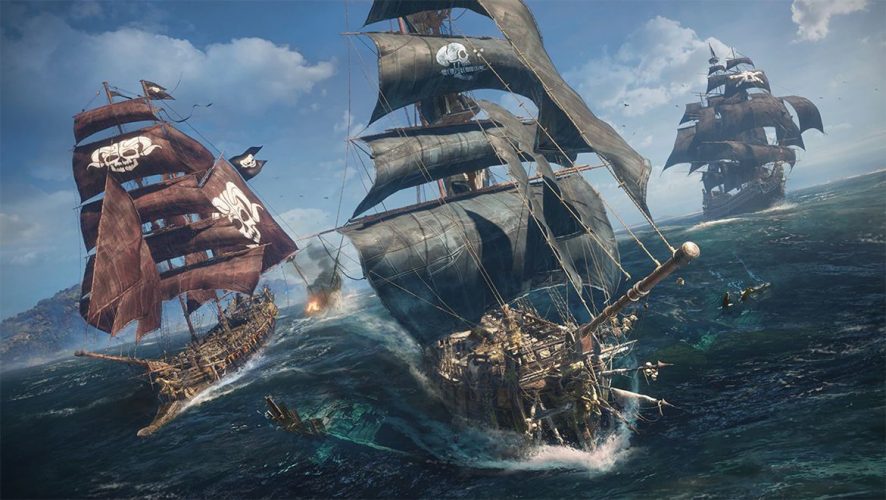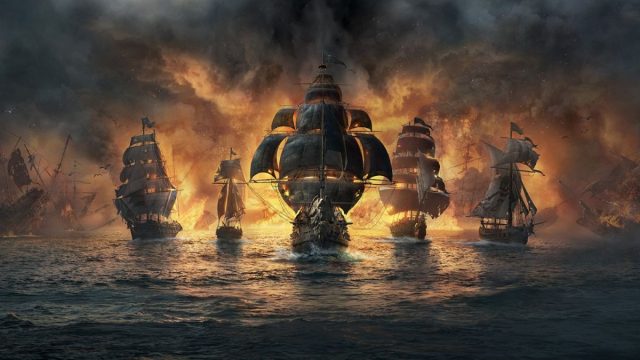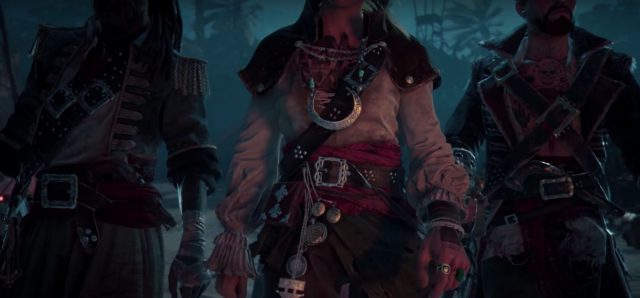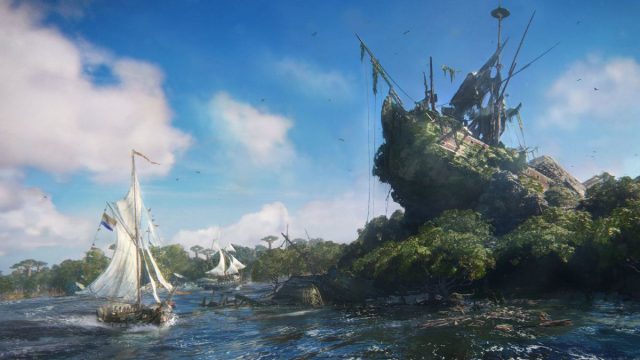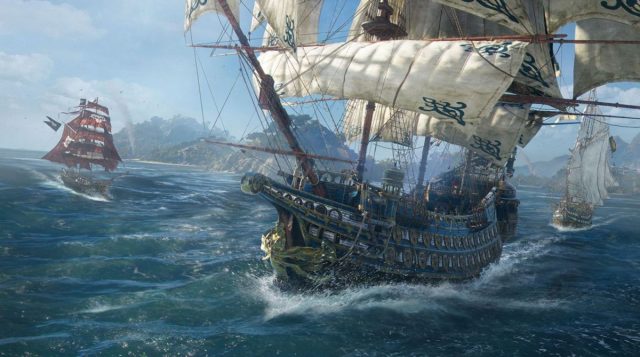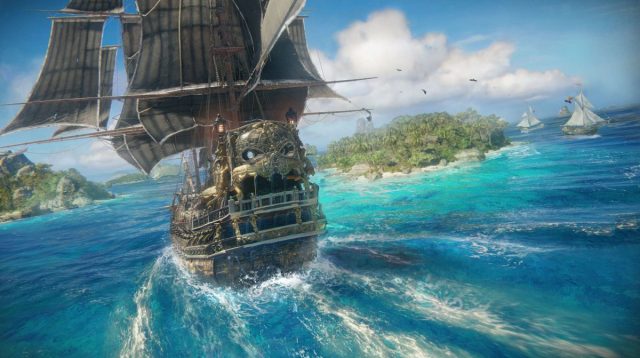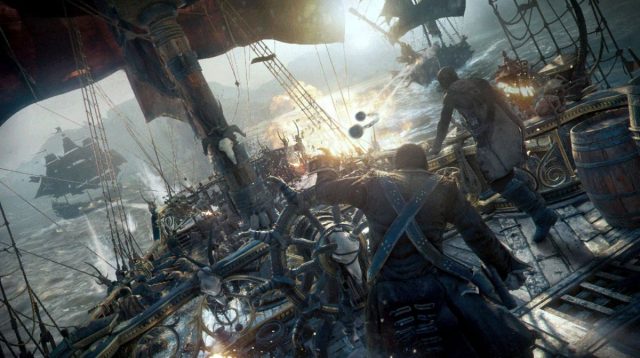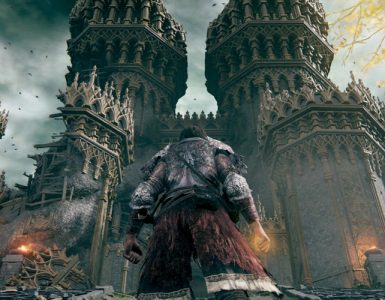Ubisoft Singapore has come a long, long way. What started out as a small team of less than 10 members, back in 2008, is now a 300-strong company responsible for some of the greatest games from the company.
With parent company Ubisoft Montreal leading the front on the Assassin’s Creed series, the local team was granted the window of opportunity to lend their expertise, but as per most things in life, the journey began slowly but steadily, leading up to Assassin’s Creed: Black Flag (2013).
Building upon the water technology used in its predecessor, Assassin’s’ Creed III, Black Flag firmly put Ubisoft Singapore in the spotlight, and the team’s role in subsequent Assassin’s Creed games grew more significant and responsibility-riddled, with a dedicated specialisation in digital water technology.
It comes as little surprise then that their upcoming project Skull & Bones – currently planned for a 2019 release – is the first to be fully helmed by the local studio.
A game filled with pirates, open seas, and naval warfare? No, we’re not talking about the sunken ship that is Sea Of Thieves. Skull & Bones is right up their alley, and judging from the warm, positive response at E3 2018, it seems to be heading down the right track. In fact, our own hands-on demo described it as “a treasure waiting to be unearthed”, which is hardly surprising given the sheer amount of work that goes behind it, as we found out during a special studio tour arranged by Ubisoft Singapore for their 10th-year anniversary (thanks guys!).


Since the game is still in development, plenty remains under wraps; however, the displays in the Ubisoft office were not. A giant figure of Assassin’s Creed: Origin’s Bayek stands proud and tall at the entrance, while an entire scaled-down collection of our favourite Assassins line the shelves. On the inside, a well-crafted standee of Assassin’s Creed III’s Connor stands guard.
Down to the studio, everything is more toned down. A wall of awards can be seen, alongside a decorative painted art. Past the glass door and into the workplace is where one spots the first hint of work-in-progress pieces: concept artworks, the beginning step to getting the whole project revving, and one of the many cogs in the entire development process.
Lined up neatly side-by-side, the pieces pinned to the wall showcased content that run the gamut from character designs and world building ideas to miscellaneous items like guns, weapons, and ship types.
Since Skull & Bones is primarily set within the Indian Ocean and Mozambique Channel perimeters – areas that have hardly or never been covered by the gaming industry – concept artists have to rely on existing visuals and research to visualise and recreate the settings of the in-game world.
Borne from that would be a uniquely Skull & Bones feature: every design is injected with the Indian Ocean flavour, such as specific trinkets and tattoos, for a quirky look. A swashbuckling adventure wouldn’t be complete without pirate-related elements, and the art team made it a point to introduce the quintessential items for the characters, equipping them with the baldrick, spyglass, compass, and the like.
Among the characters, the first to be designed is the fortune teller. Decked out in the aforementioned pirate-specific outfit, the design is then carried over to the other character selections, all of whom can be customised. In fact, customisation makes up a huge part of gameplay, from the ship’s wheel to the figurehead; between that and the vast world of Skull & Bones, there’s a lot of work to conceptualise.
Next comes translating the 2D art into a 3D environment. Taking to professional, industry software, the level artists pour their artistic efforts into building a 3D world by populating it with fine details and specific in-game elements, most, if not all, of which are entirely hand-traced. Outside of that, there’s also the need to reinforce the scale of drawings and control various elements, such as the density of a forest setting, the distance between each of these trees, and the like.
But perhaps the most challenging of all is to strike the perfect balance between aesthetics and performance: having an overly-dense cluster of plants, for instance, may impede gameplay despite its lush, appealing appearance, while freeing up too much space will make the surroundings seem emptier, though exploration is possibly easier – on average, recreating these locations take about a couple of months, and even to a year.
Naturally, the above processes are all part-and-parcel of the game development cycle, and come as nothing new to industry professionals. Where Skulls & Bones’ specialty lies, however, is in the amount of effort that goes into the development of its water technology. A unique craft that’s been honed by Ubisoft Singapore over the years, it involves everything from design, research, right down to the accuracy of minute details.
Building upon the fundamentals of Black Flag, the team utilise a physics algorithm to generate mechanics like waveforms, light refraction angles, colour of the water surface, and the angle of contact between the hull of a ship and a wave. While it certainly does reinforce the studio’s aim to deliver top-tier quality with their titles, it’s also an extremely practical move in terms of gameplay. Through the adjustment of these physics-based elements, aspiring swashbucklers are able to switch between the balance of navigation and using weapons to be tactical, making Skull & Bones an enjoyable, more skill-based affair.
In context of the game, the dedication to recreating real-life details can be seen through the African Coast design among the whole Indian Ocean setting. From the way the sea is refracted under sunlight to the different cliff types, colours of water, and the like, there’s a lot of research involved, especially for an area that’s so steeped in history and pirate lore, and seldom touched upon. This, in turns, gives rise to a unique feel for each area in the game, where players are expected to feel varying emotions across different regions not set within the seas, such as the savanna or lowlands.
As the design process is ongoing, playtesting sessions are a regular affair among the Skull & Bones team, where changes and tweaks are made according to the feedback gathered. The cycle repeats itself until everyone is satisfied with and approves of the final product, and then it’s another round of work as more ideas for future plans are brought to the table.
Specifics, as expected, are naturally kept closed to their chests, but the Straits of Malacca is one location that players can look forward to – and appropriately apt too, considering how it was, quite literally, a treasure trove for pirates back in the day. Plus, the touch of Southeast Asia flavour is certainly appreciated, and its historical relevance to Singapore makes for the perfect nod to the age of piracy.
With Skull & Bones, Ubisoft Singapore is taking a huge leap of faith (do I hear an eagle?), especially with the grandiose idea to, in the words of Creative Director Justin Farren, “not just create a linear experience, but to build a believable world and bring it to life so players can experience that and come up with their own story”.
After being given an inside look into the development process, it’s evident that the team is putting their best foot forward to produce an immersive, enjoyable, and memorable experience for fans, which could very possibly cause a sea change in the local gaming industry should it succeed. #LocalPride
And while it’s always great to appreciate the graphics and overall experience of a game, there’s a sort of beauty that lies in the subtle nuances and behind-the-scenes moments – a mindset that gaming enthusiasts tend to neglect, and something that’s strongly reflected in Skull & Bones.
All the best, Ubisoft Singapore!
Skull & Bones is slated for launch in 2019 and will be available on PC, Xbox One, and PS4.

